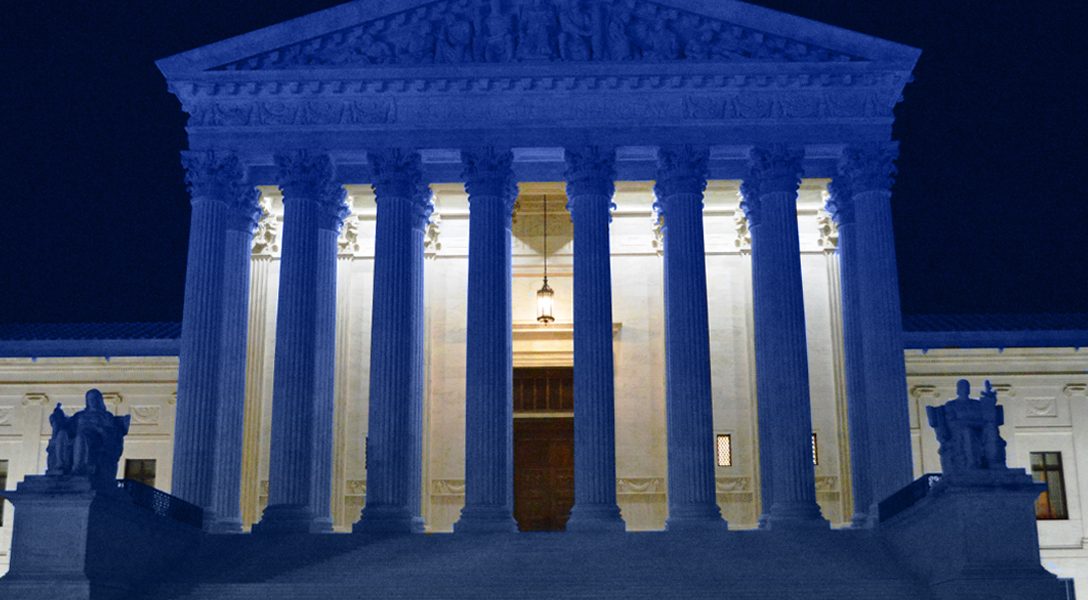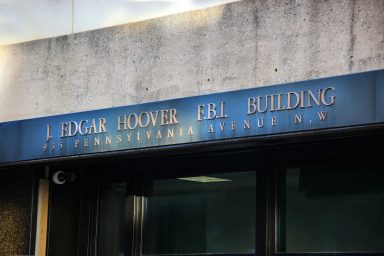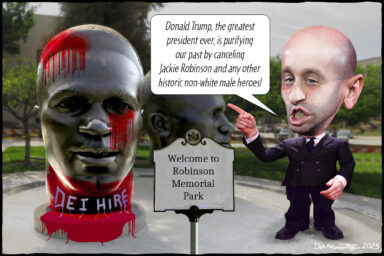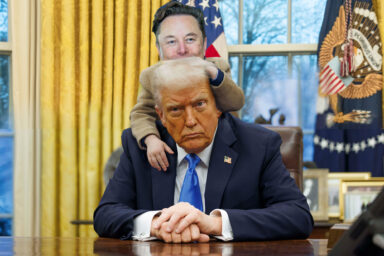For decades, conservatives have panned left-leaning judges for disregarding constitutional protocol to enact a “liberal agenda.” But history shows these critics should take a good look at their own side before rushing to judgement.
The need to protect the Constitution from “activist liberal judges” is one of the favorite rallying cries of the judicial right. The way they see it, conservative judges are the stalwart defenders of what the Founding Fathers intended the United States to be — while liberal judges are all-too-willing to strike down democratically enacted public policy to suit their personal preferences and philosophies.
It is a notion President Donald Trump perpetuated by promising to appoint more judges “in the mold of [deceased Supreme Court Justice Antonin] Scalia” to the federal bench once he took office.
But is there any merit to this notion? Or is the claim that “conservatives win through the democratic process, [while] liberals try to undo those victories through the courts,” as University of Pennsylvania law professor Kermit Roosevelt III explained the position to WhoWhatWhy, mere partisan propaganda?
Before we try to answer that, let’s look at the remedies that conservatives consistently prescribe to combat this brand of legal overreach: “constitutional textualism” and “originalism” — twin judicial philosophies they say ensure strict adherence to the Constitution.
Textualism simply means that the present day interpreters of a judicial text, in seeking its understanding, must limit themselves to the words of the text itself — not any outside questions such as “What problem was the law trying to solve?” or “What was the intent of the legislation?”
“The people who champion originalism the most loudly on the Supreme Court also seem capable of discarding it when it’s inconvenient for them.”
Closely related is the concept of originalism. Although there are diverging definitions of what it means to be an originalist, the basic idea is that you should interpret the text of the Constitution within the political, historical, and social context of the day. In other words, how would the framers’ audience have understood the words they wrote?
Politics aside, it’s hard to deny the intrinsic appeal of such schools of thought.
“Textualism makes good sense. What, after all, is the point of a written constitution if judges are free to ignore its words?” Roosevelt asked in an academic essay he penned on the subject. “And originalism makes sense as well — if we follow the current understanding of particular words rather than the Framers’ understanding, linguistic changes could lead us to different constitutional results more or less randomly.”
However, there’s an an important point to be made here: the originalist philosophy is not homogenous, as demonstrated by the split among originalists. Just look at the Supreme Court’s Obamacare decision: one originalist, Chief Justice John Roberts, came to its defense, while another, Justice Scalia, voiced the dissent. Ostensibly, both used originalism as their guide, yet somehow they found themselves espousing opposite conclusions.
The greater myth, however, is that conservatives alone hold the monopoly when it comes to faithful constitutional interpretations — or that these decisions necessarily are faithful.
Some of their legal interpretations are instead what Roosevelt — who authored a book on this issue titled The Myth of Judicial Activism — qualifies as “unsophisticated originalism,” a compromised version of the legal philosophy that he said “gives inadequate weight to the remarkable transformation of our constitution wrought by the Reconstruction Amendments.”
This poses a problem, he said, because “we are not living in the nation that our founders imagined. The Constitution has been totally overhauled … and the understandings and expectations of the founding generation are not necessarily a good guide to understanding our reconstructed Constitution.”
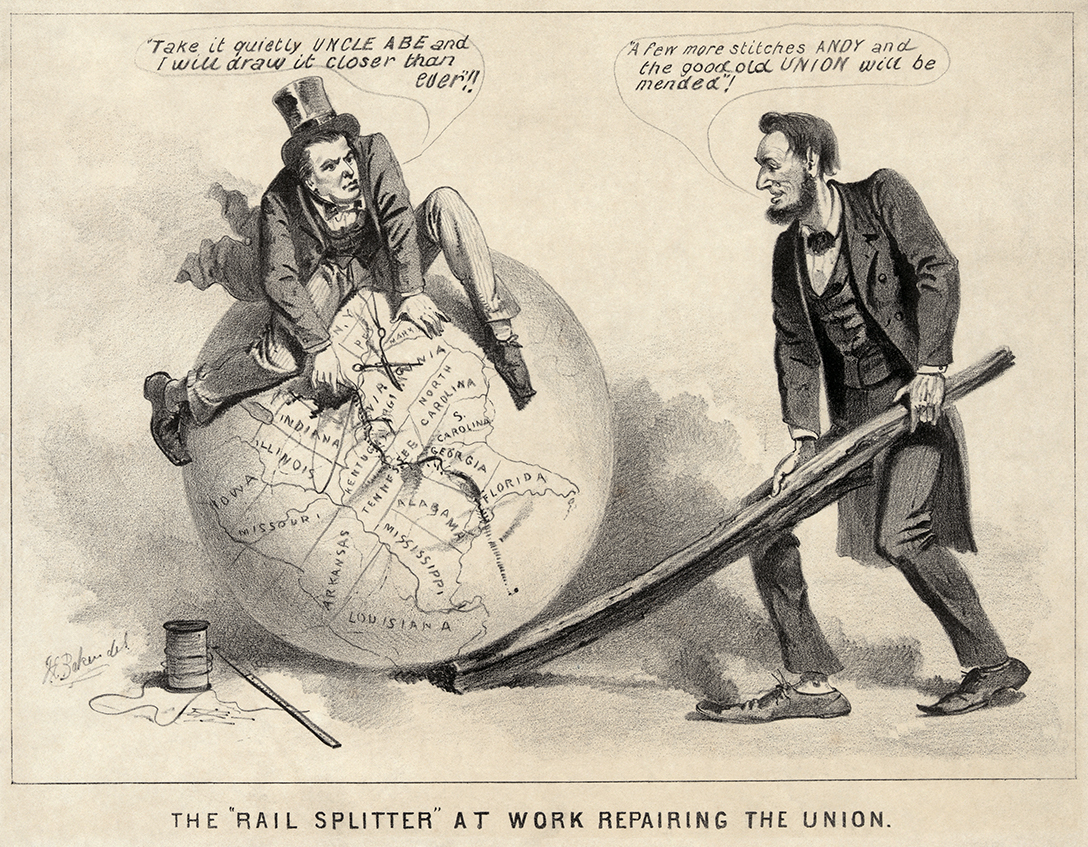
Consider the obvious technological element: who among the founders could have predicted the momentous changes of weaponry, hi-speed travel, and personal computing that are realities of living in the 21st century. Judges must face the difficult task of determining how the ancient text of the Constitution — providing for the rights to bear arms and to protect “persons, houses, papers, and effects against unreasonable searches and seizures” — should apply to Americans more than 200 years later.
But we’ve also evolved and re-evaluated our collective value system in the centuries since, as well.
“When people are trying to interpret the Constitution — particularly if they’re originalists — they spend a lot of time talking about the Federalist Papers and what the people in Philadelphia in 1787 were thinking,” Roosevelt elaborated. “And that ignores the fact that the founders’ Constitution really failed, I would say,” in the objectives set out in the preamble; namely, “to ensure domestic tranquility and to promote the general welfare.”
“Instead,” said Roosevelt, “We get the Civil War, and three-quarters of a million Americans killed by other Americans.
“Which seems sort of like a failure.”
In the bloody aftermath, the nation ratified new amendments that “fundamentally transform[ed] the relationship between the states, the nation, and the people,” he said.
Suddenly, it was no longer the federal government that posed the clear and obvious danger — it was the states.
“The founders’ Constitution is really thinking about the Revolutionary War. Then, the Reconstruction Constitution is thinking about the Civil War, and it’s thinking the federal government is not a potential tyrant, [but] a force for liberty,” he said. “The federal government fights to end slavery, and the states are the bad guys.”
So if conservatives are just as liable, if not more so, to cherry-pick when it suits their worldview, why are their decisions credited as “originalist,” while liberals’ are condemned as “activist”?
Failing to account for this aspect, Roosevelt noted, leaves the originalist perspective limited (some might even say tainted): “If you spend all your time reading the debates of the convention from 1787, you totally miss that.”
That’s why a decision like Brown v. Board of Education — which in hindsight seems like a no-brainer — could be decried by conservatives of the era, and even some liberal scholars, as an “activist” decision with no basis in the Constitution: segregation wasn’t considered oppressive by 1868 standards (at least, not by the men privileged with the authority to enact the 14th Amendment). And if you subscribe to the belief that we’re still bound by their understanding today, you are obligated to adopt the same view.
“The reason that this is concerning,” Laurie Kinney, a spokesperson for the progressive legal group Alliance for Justice, told WhoWhatWhy, “Is that when people claim this philosophy, they seem to be saying we ought to read the Constitution through an 18th century lens, and that calls into question progress that has been made on LGBTQ rights, rights for women, rights for workers, environmental protections — a great many number of critical legal rights and protections that have been established in the hundreds of years since.”
WhoWhatWhy reached out to the press arm of the Federalist Society, the pre-eminent originalist organization of legal scholars and professionals, for a rebuttal to these criticisms. The Society did not make anybody available to respond to this article.
“If you use that kind of originalism,” said Roosevelt, “Basically what you’re trying to do is resist the evolution of society’s values, and that does make it look sort of inherently conservative.”

But even in regards to the measure of historical fidelity, he still rebukes several prominent decisions by contemporary originalists, including the refusal of Supreme Court justices to admit racial considerations into college admissions decisions, giving rise to his claim that “in some areas, the originalist justices on the Supreme Court seem to have absolutely no interest in history.”
“You’ve got pretty clear historical evidence that this ‘No racial classifications’ understanding of equal protections [that] the originalist judges push in the affirmative action cases — because that’s what invalidates affirmative action — is not the original understanding; is not what people thought at the time,” Roosevelt explained. “People thought that reasonable, good faith classifications that weren’t oppressive were okay.”
“So, the people who champion originalism the most loudly on the Supreme Court also seem capable of discarding it when it’s inconvenient for them.”
The court put a similar hypocrisy on display in 2013, Luis Fuentes-Rohwer, a law professor at Indiana University, told WhoWhatWhy, when justices “made up” precedents to justify eliminating a key protection of the Voting Rights Act that barred states with histories of racial discrimination from changing their voting laws without federal preclearance.
“Generally, these phrases indicate that these individuals are advocating for a legal system, a justice system, a court system that protects the rights of the few, of the wealthy and powerful, and of entrenched interests, at the expense of everyday Americans.”
While he acknowledged that there may be “a good argument to be made for” the so-called “equality of states” doctrine used to justify this decision, Fuentes-Rohwer said no such precedent existed prior.
Given Fuentes-Rohwer’s scholarly interest in the landmark decision, it’s understandable the subject would get him fired up.
“That case essentially butchered history. It butchered the law. It massacred existing precedent.”
“In the end,” Roosevelt wrote, many of these rulings come “down to something like a value choice … I’m not here to say that is illegitimate; indeed my argument is that it is inevitable.”
But that these conservatives justices will “not acknowledge” as much, he concluded, is unacceptable.
“The idea that justices on the right … are strict guardians of the judiciary and that they interpret the law … aside from their political preference [is] simply not true,” said Fuentes-Rohwer. “Nobody does that. That’s a fable.”
Of course, originalists beg to differ. Scalia, undoubtedly accustomed to the critique that his originalist stance was merely a pretense for legitimizing right-wing politics in his court, reminded us that originalism was responsible for the legal preservation of a mode of expression that many conservatives revile.
“You should be in no doubt that, patriotic conservative that I am, I detest the burning of the nation’s flag, and if I were king, I would make it a crime. But as I understand the First Amendment, it guarantees the right to express contempt for the government, Congress, the Supreme Court, even the nation and the nation’s flag,” he said in a 2002 lecture on freedom of expression.
But if it’s true that conservatives are just as liable, if not more so, to cherry-pick to accommodate their worldview, why are their decisions validated as “originalist,” while liberals’ are condemned as “activist”?
“These are labels that are used as code words and buzzwords by the right. And when you hear those words deployed, it’s important to remember what people who use these phrases intend to signal to like-minded people about their beliefs,” said Kinney. “And generally, these phrases indicate that these individuals are advocating for a legal system, a justice system, a court system that protects the rights of the few, of the wealthy and powerful, and of entrenched interests, at the expense of everyday Americans.”
Fuentes-Rohwer said it’s “to the credit of the the conservative movement that they’ve managed to turn that fable into a seemingly accepted norm, so that now we think of somebody like Scalia as a strict constructionist; somebody who only follows law.”
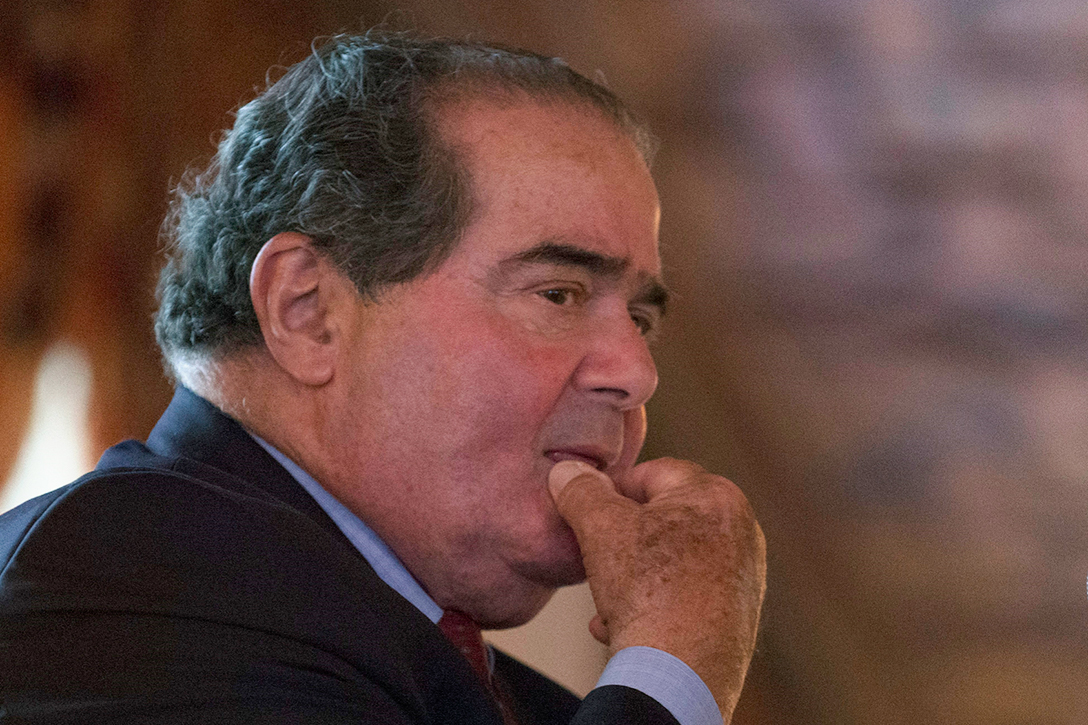
“Nothing could be further from the truth,” he said.
As demonstrated by Trump’s latest additions to the federal bench, Kinney — whose organization has been a consistent voice of disapproval towards this president’s judiciary — insists that conservative judges continue to prove that they can be just as activist as anyone.
“The current crop of judicial nominees includes some people who have said they believe judges should take a more active role in overturning legislation or regulations that don’t comport with their particular agenda,” she said. “It includes some advocates who openly advocate for disregarding precedent if an individual judge thinks he or she should.”
There’s Don Willett, for example, “who, while he was on the Texas Supreme Court, made it very clear that he thought that courts should be more vigorous in reviewing and even invalidating acts of government designed to protect health and safety,” said Kinney. “He carried his anti-regulation agenda to the point where he felt judges should take an active role in seeing that what he thought were onerous regulations were ultimately rolled back.”
She also pointed to some “very interesting remarks about judicial activism” made by 7th Circuit nominee Michael Brennan.
“For example, he once said Bush-appointed judges cannot be accurately labeled as activists for re-examining and following only correct precedent. That naturally raises the question: who decides what is correct precedent and what is incorrect precedent?”
“Mr. Brennan appears to imply that judges can make that decision for themselves,” said Kinney.

At this point, the judicial right’s departure from constitutional restrictions has become so clear in Roosevelt’s eyes that he told NPR he believes the “conservatives are actually more activist than the liberals on the current Supreme Court.”
In his view, the label is nothing more than a political buzzword devoid of any clear definition: “The term ‘activism’ gets thrown around a lot, and probably is not used with any consistent meaning. If you look at the way it’s used in political discourse, it tends to mean, basically, just a judge with whose decisions the speaker strongly disagrees.”
This is yet another “triumph of the judicial conservative movement,” said Fuentes-Rohwer.“It’s brilliant. You’re the good guy and you get to implement what you want. That’s remarkable.”
While this strategy may serve up short-term partisan gains, it may also incur grand consequences.
“I do think that it corrodes public confidence in the judiciary,” said Roosevelt.
If it gets to the point where if one believes that judges of the opposing party will willingly sacrifice their responsibilities as arbiters of the law to promote their personal politics, “then you get the same thing that happens with intense political partisanship,” he said, “which is that the other side seems to you, not just mistaken, but illegitimate.”
Ultimately, Roosevelt asserted, this may bring about the “the breakdown of the idea that we’re all in this together — working towards common goals — and maybe just disagree about how best to get to those goals.”
“That’s happened in our national political discourse, and a similar thing happens when you start talking about [judicial] activism.”
Related front page panorama photo credit: Adapted by WhoWhatWhy from US Constitution (Wikimedia).
